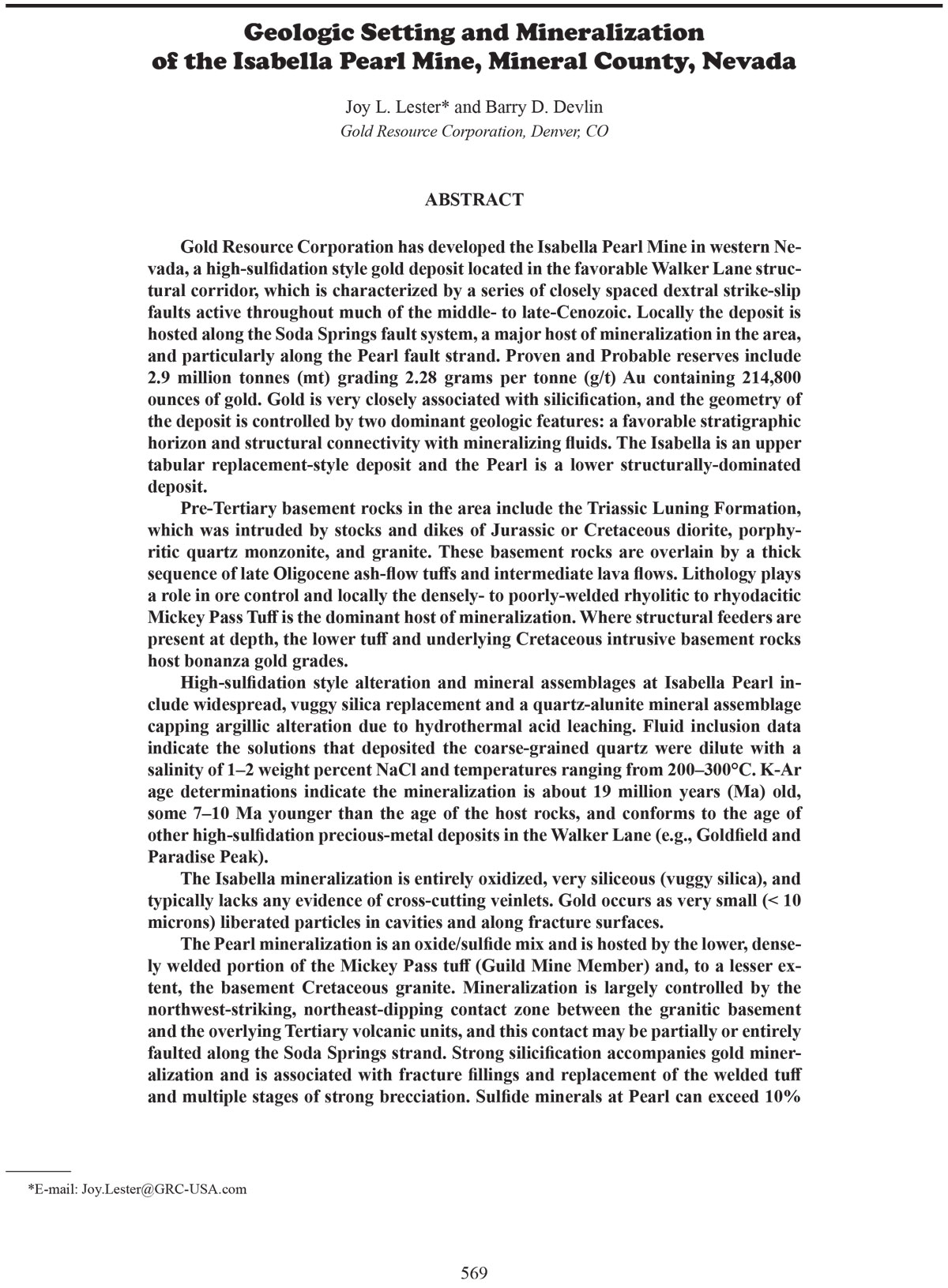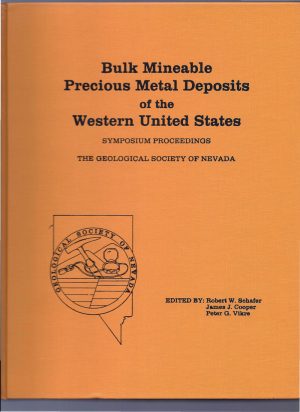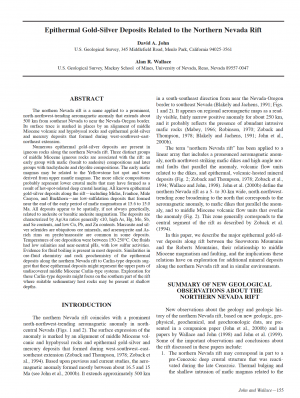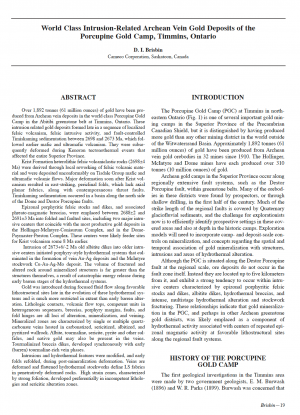Description
Gold Resource Corporation has developed the Isabella Pearl Mine in western Nevada, a high-sulfidation style gold deposit located in the favorable Walker Lane structural corridor, which is characterized by a series of closely spaced dextral strike-slip
faults active throughout much of the middle- to late-Cenozoic. Locally the deposit is
hosted along the Soda Springs fault system, a major host of mineralization in the area,
and particularly along the Pearl fault strand. Proven and Probable reserves include
2.9 million tonnes (mt) grading 2.28 grams per tonne (g/t) Au containing 214,800
ounces of gold. Gold is very closely associated with silicification, and the geometry of
the deposit is controlled by two dominant geologic features: a favorable stratigraphic
horizon and structural connectivity with mineralizing fluids. The Isabella is an upper
tabular replacement-style deposit and the Pearl is a lower structurally-dominated
deposit.
Pre-Tertiary basement rocks in the area include the Triassic Luning Formation,
which was intruded by stocks and dikes of Jurassic or Cretaceous diorite, porphyritic quartz monzonite, and granite. These basement rocks are overlain by a thick
sequence of late Oligocene ash-flow tuffs and intermediate lava flows. Lithology plays
a role in ore control and locally the densely- to poorly-welded rhyolitic to rhyodacitic
Mickey Pass Tuff is the dominant host of mineralization. Where structural feeders are
present at depth, the lower tuff and underlying Cretaceous intrusive basement rocks
host bonanza gold grades.
High-sulfidation style alteration and mineral assemblages at Isabella Pearl include widespread, vuggy silica replacement and a quartz-alunite mineral assemblage
capping argillic alteration due to hydrothermal acid leaching. Fluid inclusion data
indicate the solutions that deposited the coarse-grained quartz were dilute with a
salinity of 1–2 weight percent NaCl and temperatures ranging from 200–300°C. K-Ar
age determinations indicate the mineralization is about 19 million years (Ma) old,
some 7–10 Ma younger than the age of the host rocks, and conforms to the age of
other high-sulfidation precious-metal deposits in the Walker Lane (e.g., Goldfield and
Paradise Peak).
The Isabella mineralization is entirely oxidized, very siliceous (vuggy silica), and
typically lacks any evidence of cross-cutting veinlets. Gold occurs as very small (< 10
microns) liberated particles in cavities and along fracture surfaces.
The Pearl mineralization is an oxide/sulfide mix and is hosted by the lower, densely welded portion of the Mickey Pass tuff (Guild Mine Member) and, to a lesser extent, the basement Cretaceous granite. Mineralization is largely controlled by the
northwest-striking, northeast-dipping contact zone between the granitic basement
and the overlying Tertiary volcanic units, and this contact may be partially or entirely
faulted along the Soda Springs strand. Strong silicification accompanies gold mineralization and is associated with fracture fillings and replacement of the welded tuff
and multiple stages of strong brecciation. Sulfide minerals at Pearl can exceed 10% (of the rock) and are composed primarily of pyrite, colloform-banded “melnikovite”-
type pyrite, and bladed marcasite (or pyrite after marcasite) in dark microcrystalline
quartz.





